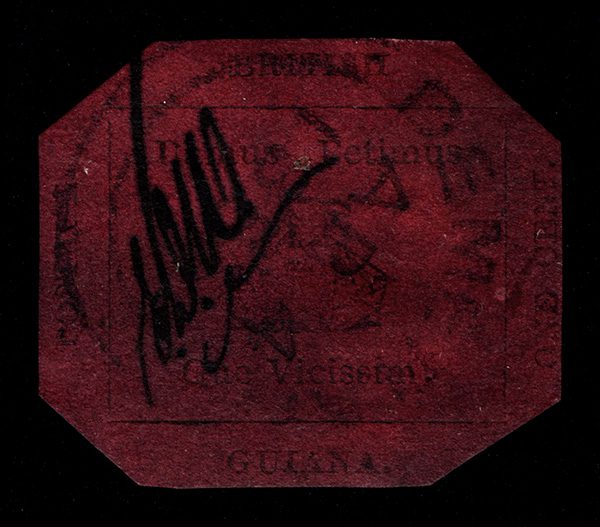Once-in-a-Lifetime Chance to See the British Guiana One-Cent Magenta
The British Guiana One-Cent Magenta is the Holy Grail of stamp collecting – the stamp sought by kings and queens, millionaires and blue-collar collectors alike. Rarely displayed in public, the British Guiana recently sold for nearly $10 million.
In an unprecedented move, its new owner has allowed it to be displayed at the National Postal Museum indefinitely. This will be the longest and most accessible exhibit of the legendary stamp in its colorful history – and it’s free!
Brief History of the British Guiana
British Guiana was a British colony located on the northern coast of South America (present-day Guyana). In 1856, the postmaster of the capital city of Georgetown issued a small quantity of stamps for provisional use while he awaited a shipment of postage from England.

In 1873, a twelve-year-old stamp collector discovered the British Guiana One-Cent Magenta among his uncle’s old papers. The corners have been clipped and the boy wasn’t happy with the stamp’s appearance, so he sold it for six shillings, which he used to buy a packet of foreign stamps in better condition.

Five years later, the famous collector Count Philipp von Ferrary bought the British Guiana One-Cent Magenta for about 40 pounds sterling. The stamp remained in his private collection for nearly 40 years. After Ferrary’s death, it was sold to a handful of prominent philatelists, with the last being John du Pont. In 2014, du Pont’s estate sold the British Guiana to entrepreneur Stuart Weitzman, who generously offered to make it available for this exhibit.
When and How to Go
The British Guiana One-Cent Magenta is on display in the National Postal Museum’s William H. Gross Stamp Gallery. The exhibit is scheduled to continue indefinitely. In addition, the exhibit may be temporarily unavailable for preservation or conservation reasons. To avoid disappointment, check with the museum before planning a trip by calling (202) 633-5555.
You can learn more about the exhibit here.
The National Postal Museum is located in the old Post Office at 2 Massachusetts Ave. N.E., Washington, D.C. (Across the street from Union Station.) Hours of operation are 10-5:30 daily. Plan to make a day of it and bring the entire family. This great rarity is one of many reasons to visit – there truly is something for everyone at the NPM!
